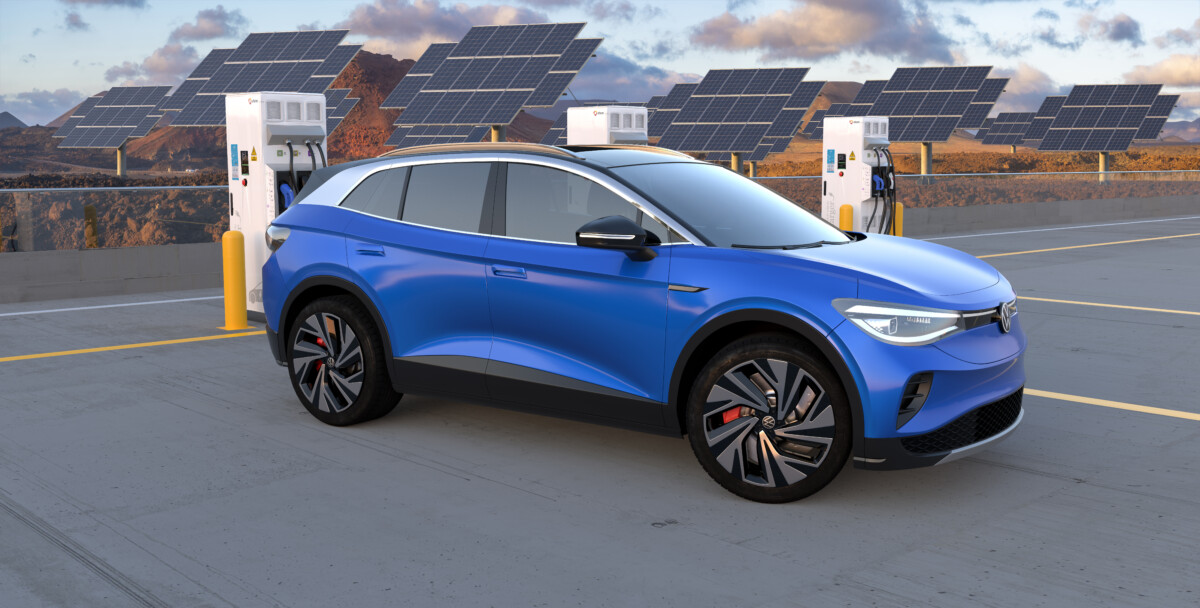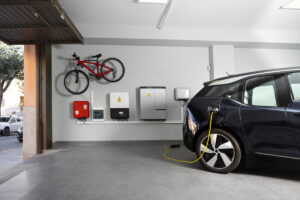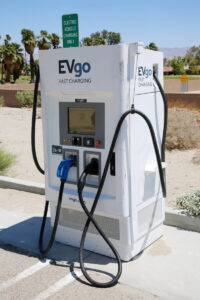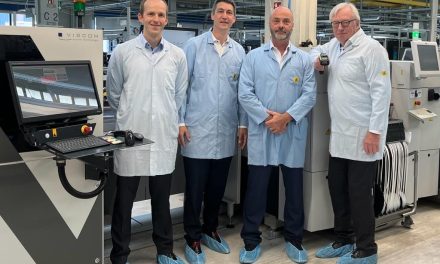U.S. Charging 2.0: Reviving Public Charging Infrastructure

By Brian O’Leary and Collin Kelly, Indium Corporation
Public Chargers Receive a Failing Grade
With dozens of new electric vehicles coming to market in the U.S. in the next few years—many with a range of 300 miles—charger anxiety is now replacing range anxiety as a top buyer concern. Drivers need confidence that there are a sufficient number of working and available chargers in their communities and along their routes. Without it, we risk losing the momentum that e-Mobility has gained in recent years. This requires an overhaul of our public charging infrastructure, along with a different approach to the challenge by all stakeholders involved.

Brian O’Leary
Studies confirm that most EV drivers do more than 80% of their charging where they live, presenting the first obstacle to reviving our public charging infrastructure. It is estimated that about 40% of U.S. households don’t have access to convenient overnight home charging as many apartments and condos lack a dedicated garage. This number is actually much higher, since many home garages are now multi-purpose spaces. A recent University of California, Berkeley study on the Reliability of Public Direct Current Fast Chargers (DCFCs) found that more than a quarter surveyed were non-functional. DCFCs are the heavy lifters of charging technology, delivering an experience akin to filling up a gas tank. The study exposed not only a high percentage of non-functional chargers but also a lack of follow-up after issues were identified. Imagine this playing out at your neighborhood gas station: one out of every four pumps is out of order and remains so for a week or more.
DCFCs, the focus of the Berkeley study, are also what is getting all the attention in the $7.5B infrastructure bill. The study highlights that existing DCFCs are experiencing electrical systems failures, such as unresponsive or unavailable screens, payment system failures, charge initiation failures, connection failures, and broken connectors.
Chargers 101
 Unlike level one chargers typically found in a home garage or level two public chargers commonly found where you shop, DCFCs (also called level threes) are earmarked for installation every 50 miles along Alternative Fuel Corridors, particularly along the Interstate Highway System, over the next five years [1]. DCFCs pack more punch because they bypass the EV’s on-board charger (OBC) to send power directly to the EV’s battery pack. Since the electronics that take the place of the EV’s OBC are in the DCFC charger, they can easily contain high-performing power electronics, larger cabling, and robust cooling without added cost and weight to the EV itself.
Unlike level one chargers typically found in a home garage or level two public chargers commonly found where you shop, DCFCs (also called level threes) are earmarked for installation every 50 miles along Alternative Fuel Corridors, particularly along the Interstate Highway System, over the next five years [1]. DCFCs pack more punch because they bypass the EV’s on-board charger (OBC) to send power directly to the EV’s battery pack. Since the electronics that take the place of the EV’s OBC are in the DCFC charger, they can easily contain high-performing power electronics, larger cabling, and robust cooling without added cost and weight to the EV itself.
Currently, the most powerful passenger vehicle DCFC from ABB can deliver 360kW of power [2]. According to the manufacturer’s website, the Terra 360 can add a range of 62 miles in under three minutes or a full charge to any 360kW-capable EV in under 15 minutes. Currently, the Lucid Air holds the prize for the highest peak charging rate of any passenger vehicle—just over 300kW [3]. In a test on a 350kW Electrify America DCFC, a range of 100 miles was added in 5.5 minutes or 400 miles in 37 minutes.
Level twos utilize the EV’s OBC to send power to the battery pack. In contrast, DCFCs utilize a rectifier power supply, similar to an EV’s OBC and thus are far more costly both in hardware and installation. A commercial level two hardware and installation can range widely, but PG&E has reported a number around $18K. Contrast this to a DCFC and it can be many times more. Cathy Zoi, CEO of Evgo, was quoted in the WSJ that their average deployment per DCFC was $110K, assuming a 150kW system. 350kW would likely run much more. To put the Berkeley study in perspective, over 150 DCFCs were found to be nonfunctional, which would represent well over $15M in assets in disrepair in just one market!
The Electric Vehicle Supply Provider (EVSP) Disconnect
The Berkeley study points out that the EVSPs reported 95–98% uptime, contrary to field evidence. This disconnect can be explained by a variety of factors, such as: a complex web of stakeholders involved in maintaining existing equipment, lack of maintenance budgets, and offline chargers not being counted as nonfunctional.
According to Cory Bullis of Canadian-based FLO, which recently received high marks by ConEdison with 99.6% uptime, “There is no silver bullet as to how to determine the current status of a charging unit.” Many operators, including FLO, ping a charger to see if it is online, but without smart chargers or additional sensors, there is limited information to glean. A cut cable, or similar vandalism, is a challenge to identify remotely for any operator—charging companies typically rely on drivers or site hosts to report those issues. FLO, however, uses site usage data as a way to determine if there is a potential issue. For example, a sudden drop in site traffic could indicate an issue, such as a broken cable, to investigate.
Ultimately, it is often a customer phone call that reveals non-functional equipment; however, the Berkeley study shows that average customer service hold time was 10 minutes. Many customers may hang up and move on if on hold that long.
Federal Government Coming to the Rescue?

The federal government is proposing a standard of 97% uptime in order for providers to receive funding, with performance submitted as a dataset on a quarterly basis. Maintenance of DCFCs will shift to the states.
In a recent workshop hosted by Caltrans & California Energy Commission to discuss the National Electric Vehicle Infrastructure (NEVI) Program, California is planning on enforcing 97% uptime but no details on how this will be done were revealed. The program is not applicable to existing chargers. On the positive side, this demonstrates a recognition that funding should be applied to the maintenance of new chargers; however, as long as 97% uptime is maintained, the state leaves it to the applicants to determine how much.
The workshop confirmed that California will be adding 250,000 level twos and 10,000 level threes by 2025. Where the federal plan does not address specifics of level two performance, California bill AB2061, co-sponsored by Charger Help and FLO, looks to both hardware and software reliability for level two and level three DCFCs. The bill also addresses uptime and how it is measured. “What is excluded from uptime measurements is perhaps even more important. Upstream infrastructure failures, such as a power failure or down cellular or WiFi connections, would be unfair to count toward our uptime metrics because we cannot fix those issues since we don’t control those pieces of infrastructure,” according to Bullis. “Also, vandalism should be excluded since, if it was included, it could create a perverse incentive to not place equipment in areas with higher rates of vandalism.”
History shows that what happens in California often takes root in other parts of the country or becomes the new federal standard.


 Considering most field failures are found to be electrical in nature and maintenance clearly still needs to be sorted, there is a business case to build a more robust charger in the first place to meet the newer anticipated uptime standards.
Considering most field failures are found to be electrical in nature and maintenance clearly still needs to be sorted, there is a business case to build a more robust charger in the first place to meet the newer anticipated uptime standards.









